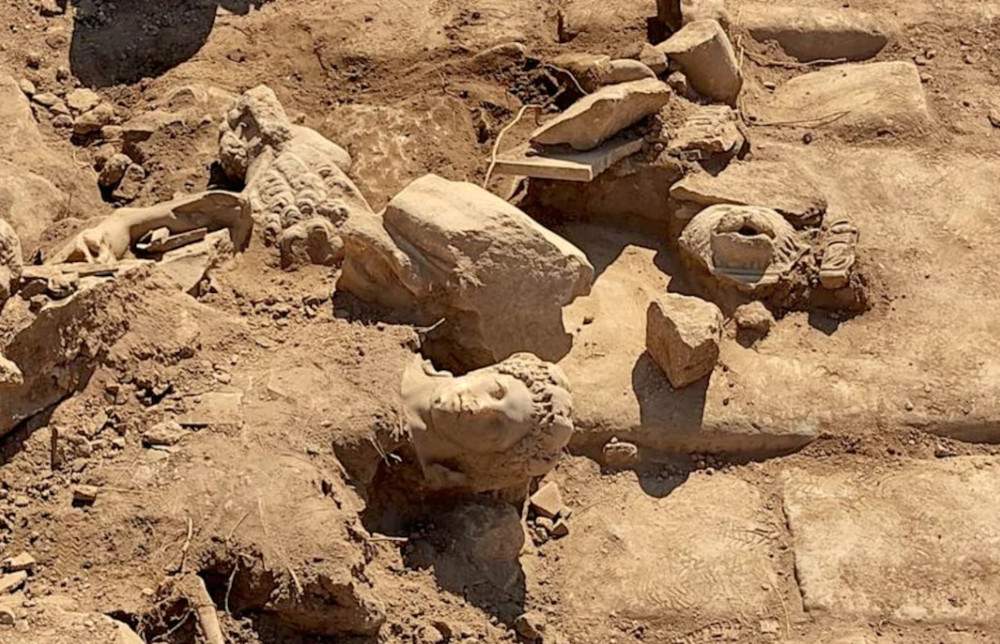During excavations at the archaeological site of Philippi, near Kavala in Greece, by theAristotle University of Thessaloniki team headed by Professor Natalia Poulos in collaboration with lecturers Anastasios Tantsis and Aristotle Menzos, a Roman-era (2nd century AD) statue depicting Hercules was found. This was announced by the Greek government’s Ministry of Culture and Sports.
The sculpture depicts a young Hercules, with larger-than-life proportions, on whose head he wears a crown of vine leaves held on the back by a sash whose ends terminate at the shoulders. Confirming that it is indeed Hercules is the discovery in fragments of the club and lion skin that the young man holds in his left hand. The sculpture probably decorated a building dated between the 8th and 9th centuries AD: a nymphaeum overlooking the city.
In fact, remains of a richly decorated building, presumably a nymphaeum with a large fountain, were also discovered near the statue.
“This finding testifies to how public spaces were decorated in important cities, including Philippi,” said Natalia Poulos. The Greek Ministry of Culture and Sports has assured that excavations at the site will continue in the coming year.
 |
| Greece, Roman-era statue of young Hercules found. He possibly decorated a nymphaeum |
Warning: the translation into English of the original Italian article was created using automatic tools. We undertake to review all articles, but we do not guarantee the total absence of inaccuracies in the translation due to the program. You can find the original by clicking on the ITA button. If you find any mistake,please contact us.